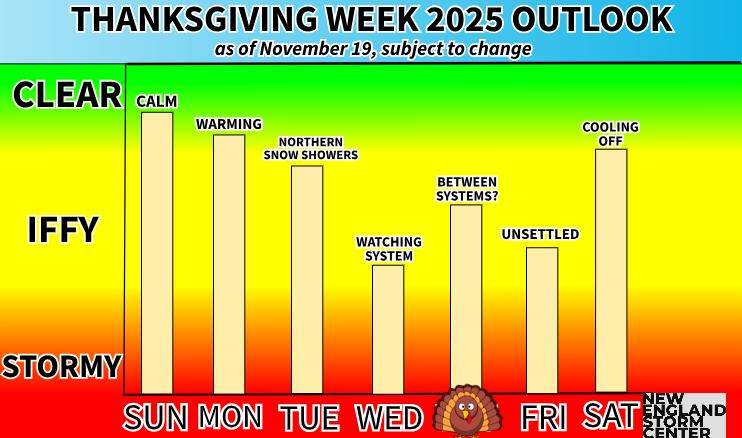Heat Arrives in New England Before Showers, Storms Return
- Tim Dennis
- Jun 4
- 3 min read
After spending much May under persistent troughing, New England will be spending the next few days under a firm ridge of high pressure, which is centered to New England's south, resulting in a modest southwest flow. This will bring some long-awaited summer heat to the region with widespread 80s to low 90s expected for today and Thursday.
Temperatures aloft will be warming throughout the first half of the week, with 850mb (about 4,700 feet above sea level) peaking in the 60s by Thursday. With deep ridging and a well-mixed atmosphere, this will translate to widespread 80s at the surface with the potential for low to mid 90s in the typical warm spots of southern New England (mainly the Connecticut River and Merrimack Valleys).

By Thursday, a slow-moving frontal boundary approaches and crosses New England late this week through the weekend. This boundary will produce more clouds and showers beginning Thursday, and will eventually bring temperatures back down. Overall, the frontal boundary has trended slower on Thursday, likely remaining draped near the international border. This slower trend with the front has allowed temperatures to trend up for southern and central New England. The northern third of New England will be a notch cooler amid more clouds and numerous storms closer to the front.

As far as the storm potential goes for Thursday, there will be ample shear and moisture to fuel and drive thunderstorm development. Instability will present with CAPE values building toward 2,00 joules/kilogram across the region, which is plenty to allow for storms. The big issue, which will likely greatly limit storm coverage, especially across southern and central New England, will be a lack of lift and forcing.
With the frontal boundary likely staying near the Canadian border, the best forcing for storms to develop will remain to the north of New England. Storms will be most numerous across the northern third of New England, closer to the frontal boundary where forcing will be strongest. With that said, the instability and moisture alone could allow for an isolated storm or two to pop up anywhere in the region, including southern New England.
Below: HRRR showing potential weather Thursday afternoon:

This frontal boundary will slowly sink southward through the rest of the week. The boundary may even stall or lift back northward for a time Friday into Saturday. This will set up the potential for more numerous showers and storms across the region as multiple waves of low pressure ride along the front. With a slow-moving frontal boundary and a weak steering flow, slow-moving and/or training storms are possible, which will be capable of producing heavy downpours. This may result in localized poor drainage flooding issues.

The exact placement of the boundary will determine what areas see the highest and longest-lasting shower/storm activity on both Friday and Saturday. Overall, the threat of storms will shift south on Friday versus Thursday. There remains a large spread in where the highest rain totals will land. The most rain will fall across a band of New England closest to the boundary. This has generally been trending farther north, but all of New England will have the chance to see at least some downpour activity between dry stretches on Saturday.
Below: RGEM showing potential weather Friday afternoon (1st image) and Saturday afternoon (2nd image):
Exactly how much rain falls and whether there are more wet hours or more dry hours on Saturday will come down to the frontal boundary placement and the strength, timing and amount of low pressure systems that traverse the boundary through Saturday. A widespread 0.25-0.75" of rain is possible, likely falling in pulses rather than a continuous rainfall. With the potential for downpours, rainfall totals will likely end up very varied across New England.
At this point, the highest impact from these showers and storms will be heavy downpours and localized poor drainage flooding. The severe threat will likely be greatly limited by lower instability and an overall weak flow aloft. This weak flow aloft could result in slow-moving cells, however. The frontal boundary and associated low pressure systems will very likely shift east, away from New England by Sunday, setting up a drying trend.







Comments